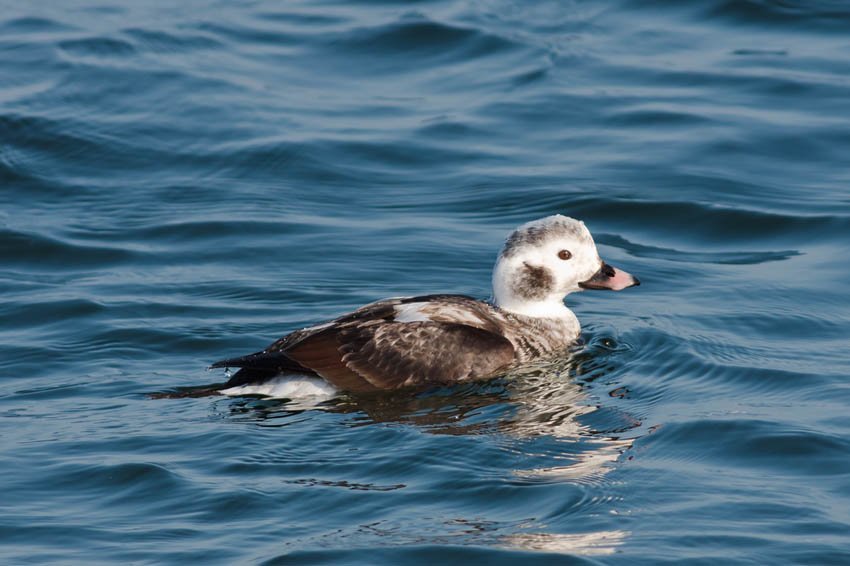Long-Tailed Duck

Long-Tailed Duck Overview
The long-tailed duck's plumage varies throughout the year. In the summer months, adult males have a black head, chest and wings with a gray face. During this time, their upper back feathers are long, buffy and black in the center. In the winter months, adult males have a white head and neck and a grey patch around the eyes. During this time, they have a large black spot that extends from their cheek down the sides of their neck.
The summer plumage of adult females is a dark head and neck with white around the eyes. During this time their breast and back is brown or gray. In the winter months, adult females have a white head and neck with a round dark brown cheek patch, a white belly and a brownish-grey breast and back.
Long-tailed ducks feed by diving for small fish, crustaceans and mollusks. They can dive to depths of 200 feet (61 m).
Frequently Asked Questions
What does the Long-Tailed Duck look like?
Their plumage changes by season. Males are mostly black and gray in summer, and white with a dark cheek patch in winter. Females are darker in summer and turn mostly white in winter with a brown cheek patch.
How deep can Long-Tailed Ducks dive?
Long-Tailed Ducks are excellent divers and can reach depths of up to 200 feet (61 meters) in search of food.
What do Long-Tailed Ducks eat?
They feed on small fish, crustaceans, and mollusks, diving deep below the water surface to catch their prey.
Are Long-Tailed Ducks found in Hawaii?
They are not native to Hawaii but may rarely appear as migratory vagrants. Their usual range includes Arctic and sub-Arctic regions.
Why are they called Long-Tailed Ducks?
The species is named for the long, narrow tail feathers of adult males, which are especially prominent during breeding season.








